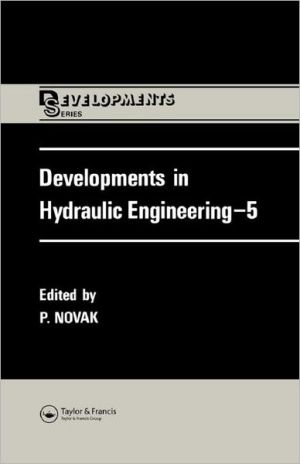

 |

|

The average rating for Developments in Hydraulic Engineering based on 2 reviews is 3 stars.
Review # 1 was written on 2017-07-16 00:00:00 Michael Goggins Michael GogginsPhysics and philosophy of Sankhya school of thought One of the striking features of this book is that the author interprets Sankhya philosophy in light of quantum physics; and yoga philosophy with advances in neurobiology and psychology. He suggests that the current development in theoretical physics has roots embedded in Sankhya thought. Considering the fact this book was published in 1968, it is rather a bold attempt of the author to understand physical reality of Sankhya philosophy in light of modern physics. Sankhya makes is the first of the six schools of Hindu philosophy that marks the beginning of the golden age of Indian philosophy. This is normally regarded as an atheistic thought in a dualistic system of Purusha and Prakriti from which all categories of existence are derived. Although it was developed as a dualistic but it is not an absolute dualism. The first emanation of Prakriti is mahat which is the common source for all the buddhis that are lost in Prakriti during the state of pralaya. Purusha is the pure subject and is the transcendental source of all consciousness. Prakriti is the causal background of the whole objective world. The existence of Prakriti is based upon the inferences from logic and experiences. Cause and effect are fundamentally identical with each other in the material cause. The ultimate cause of the objective world is contained in the concept of Prakriti. The author suggests that the three basic elements of the Sankhya; sattva, rajas and tamas are similar to the quantum physical concepts of proton, electron and neutron. Sattva and proton both represent basic force of order within the structure that forms the building block of material world. The rajas guna represents the dynamic energy of the material world that is matched by the physical characteristics of the electron that determines the chemical and biochemical processes. The mass of the atom depends on the tamas guna of matter, the neutron. Each of these three fundamental particles that constitute an atom is the building block of matter and the universe is similar to three gunas of Sankhya that constitute Prakriti. In Prakriti the three gunas combines in various proportions in the development diverse nature. For example, an electron has mass, energy, and motion, but it is the rajas guna that dominates in the electron. The physical side of ahamkara first produces the subtle elements which combines tamas to produce heavier atoms of various elements. The disproportionate combination of tamas and rajas gunas exhibit more than mass and energy, they produce the polyatomic structures, and the molecules of life. Prakriti is the non-self and Purusha is the self. The difficulty in discussing the Purusha concept is that there are no categories of the mind which can be applied to Purusha. All mental constructs are prakritic in nature. Because of these difficulties, the concept of Purusha was described by a system of negation to illustrate that it is beyond description. Both Sankhya and Yoga describe Purusha as devoid of any characteristics and it is state of pure consciousness, but both Purusha and the prakriti are real. The self illusion makes it appear that purusha is participating in the prakritic role. Sankhya discusses the theoretical aspect of this illusion and the yoga provides a practical method to remove this illusion. The relationship of purusha and prakriti is dissolved when it is recognized that misconception of the self which gives the appearance of consciousness to prakriti. The practical method yoga requires a person to be in a morally healthy state and his body is well disciplined so that it does not need much of his attention. Using the appropriate asana and yoga, the individual gains control of mind and stay focused on a single object for an infinite time. Then he would have reached the sate of samadhi. This state leads to the realization of Purusha attaining mukti (moksha), the release from the bondage of birth, death and rebirth. There are four paths to achieve mukti, they are; bhakti yoga, karma yoga, jnana yoga, and raja yoga. |
Review # 2 was written on 2016-12-15 00:00:00 Chris Williams Chris WilliamsI just finished reading this book and I want to say "THANK YOU AVIVA!" I'm an educated Chicano from California so it's a really hot topic here. Many people are greatly misinformed about the subject of immigration. It's not completely their fault since it is a politically charged issue. We tend to listen to those that shout loudest (ahem* Fox News). Aviva dissects the 21 most voiced accusations about immigration, which prove to be myths depending on racist conventional wisdom. Aviva elaborates on how neoliberal policies, primarily deregulation, in international business has allowed the exploitation of third world countries. The current immigration debate in the US is only fragment of a larger picture. She presents a complex issue in a straight forward manner, with her father's (Noam Chomsky) dry humor and moral obligation. Another work in the name of rational thinking! (Includes a works cited section to fact check.) |
CAN'T FIND WHAT YOU'RE LOOKING FOR? CLICK HERE!!!